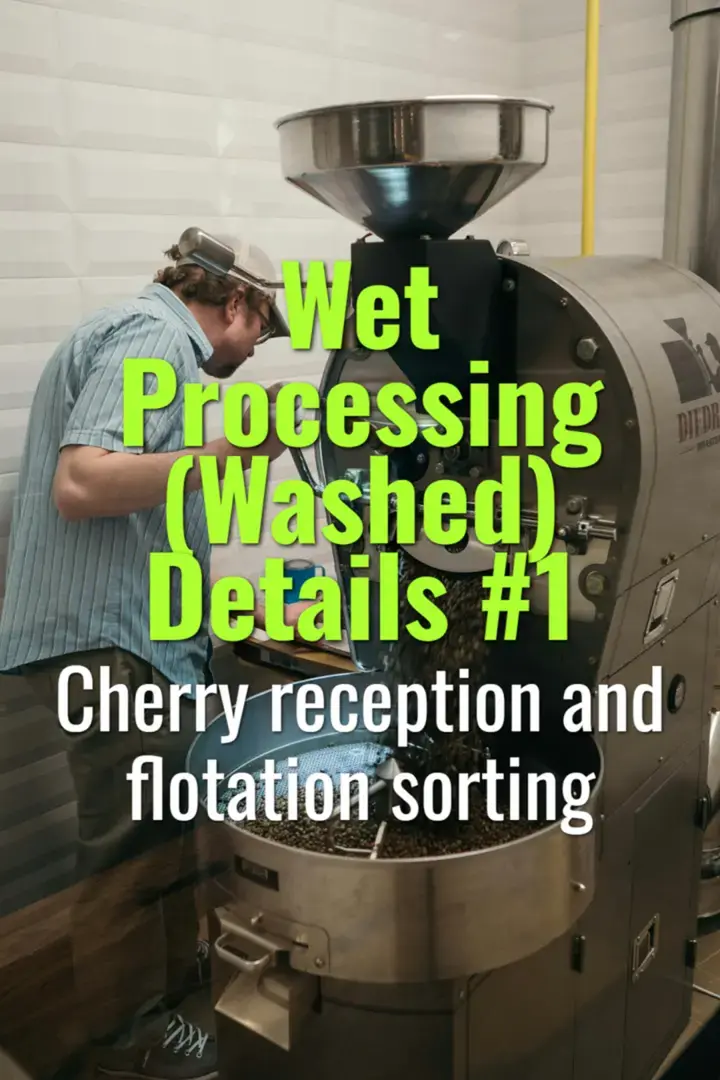Cherry reception and flotation sorting
This topic explains the first steps in washed coffee processing—cherry reception and flotation sorting—detailing how farmers ensure only ripe, quality cherries move forward in the process.
- Coffee Basics Nerds
- 2 min read
Article 1 of 12 in Wet Processing (Washed) Details/

Cherry Reception
- Purpose: Collect and inspect freshly harvested cherries before pulping.
- Timing: Cherries must be delivered to the wet mill within hours of picking to avoid unwanted fermentation.
- Procedures:
- Weighing loads for yield tracking.
- Initial hand-sorting to remove leaves, twigs, unripe, or overripe cherries.
- Separation by lot, farm, or variety for traceability.
Flotation Sorting
- Method: Cherries poured into a water-filled tank (flotation tank or channel).
- Principle:
- Ripe, dense cherries sink → high sugar content, better cup potential.
- Unripe, defective, insect-damaged cherries float → removed from processing.
- Efficiency: Quick and effective for large volumes, though often combined with manual sorting for accuracy.
Importance of Sorting
- Prevents defective cherries from entering fermentation.
- Ensures uniformity, leading to cleaner and more consistent flavor profiles.
- Increases cupping scores and market value.
Additional Steps at Reception
- Some mills use mechanical siphons or density sorters for more precise grading.
- Premium lots may receive double sorting: flotation plus hand-picking.
Challenges
- Requires abundant clean water, which may be limited in some regions.
- Risk of water contamination if flotation tanks are not regularly cleaned.
- Inefficient sorting increases risk of off-flavors in final cup.
Lasting Importance
Cherry reception and flotation sorting are critical quality gates in washed processing. By removing unripe or defective fruit early, farmers protect flavor clarity, consistency, and reputation, setting the foundation for specialty-grade coffee.
You might also like:
- Tags:
- Lasting Importance
- Cupping Scores
- Flavor Clarity
- Specialty Grade
- Flavor Profiles
- Market Value
- Challenges Requires
- Clean Water
- Consistent Flavor
- Washed Processing
- Grade Coffee
- High Sugar
- Large Volumes
- Hand Sorting
- Final Cup
- Insect Damaged
- Increases Risk
- Sorting Remove
- Clarity Consistency
- Defective Cherries
- Flotation Sorting
- Premium Lots
- Overripe Cherries
- Unripe Overripe